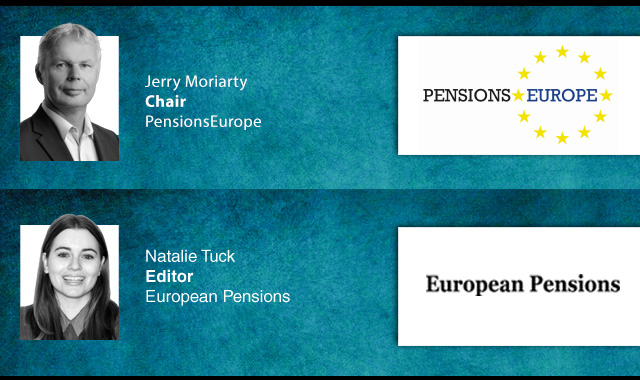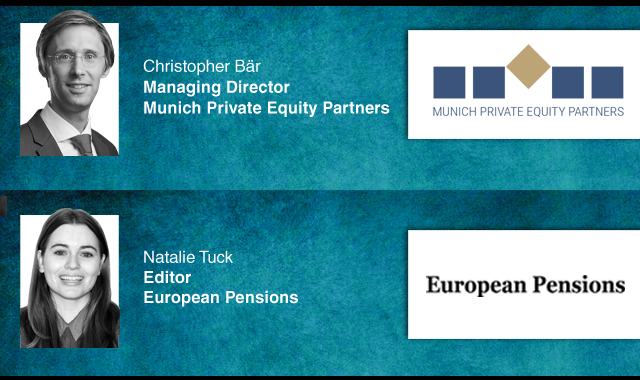Laura Blows explores whether technology is being embraced – and in what ways – in order to help improve scheme governance
The pensions world is not often described as ground-breaking or dynamic in its use of technology and software. But now, over 10 years into the 21st century, the use of technology and the benefits it can provide for pension scheme governance is being increasingly explored.
From a consultant’s perspective, there certainly has been increasing interest from pension clients. “There have been more clients in the last couple of years asking about software solutions to aid scheme governance, as awareness around how technology can help with this has grown,” LCP partner Aiden Coloe said.
Regulatory pressure
But what is the driving force behind this increased interest? In the UK, it was the launch of The Pensions Regulator (TPR) and its spotlight on governance that helped force the message home for a number of schemes.
For scheme governance software provider eShare, the Regulator’s attention was the catalyst for its company. MD Alister Esam explains: “We started our business in 2004 as it was clear that the new Regulator would have teeth and would address the issue of trustee involvement in pension plans. We were keen to state a case for technology to play a key part in solving that issue.”
A particular focus of TPR is around scheme data. Pension schemes of all sizes can often face trouble with the accuracy of its data and subsequent cleansing. Therefore specific software is available to cater for this requirement, such as testing for gaps in data. But while TPR has its eyes set on data governance in the UK, mainland Europe has had the IORP Directive’s focus on investment to test its governance mettle.
Article 18 of the IORP Directive imposes a 5% limit on the amount of resources an occupational pension scheme can invest in the sponsoring employer. There had been an exception for investments by the operator of a collective investment scheme, and a transitional provision that allowed certain schemes to be in excess of the 5% limit, but these expired in September 2010.
According to SRL Global CEO Neil Puri, the IORP Directive has had huge consequences for scheme governance. “The 5% limit on exposure to the sponsoring employer includes the underlying instruments your managers are buying for you. The regulation requires you to have a genuine look into all your investments and prove that you are monitoring how it is changing over time.
“This works with long-only managers but in the hedge fund world it is virtually impossible to police. You cannot really ask a manager to exclude an instrument with hedge funds. One solution is to create a segregated mandate (managed account) to facilitate this.
“However, this shift of control leaves the pension fund responsible for the governance of the managed account, as the manager is now just a sub advisor trading the pension fund’s account. Many of the other day-to-day operations of running the account are now the responsibility of the pension fund. This requires systems to closely monitor the trading activity, especially where leverage or leveraged instruments are being utilised as the pension fund is the ultimate counterparty, with just one aspect, the investment decision making, being delegated out.”
And that responsibility has kept on growing. As pension schemes create more diversified (and therefore complex) portfolios, even more governance is required. “Bond yields have been very low and equities have been on one big rollercoaster over the last 10-15 years. Therefore allocations to hedge funds have increased and will continue to replace equity allocations in order to access real alpha,” Puri explains.
While the investment ideas and responsibility can be outsourced, the overall accountability remains with the trustees. Therefore technology is being used for trustees to ‘watch the watchmen’.
“This is where technology comes in; to monitor and give an early warning of potential scheme mandate breaches as well as active managed account monitoring. The scheme needs to know what all the managers are doing both individually and collectively, as whilst managers could be adhering to their mandates, their collective action could be accidentally pushing you into a scheme breach,” Puri says.
Technology solutions such as SRL’s Nexus Enterprise Solution enable trustees, corporate sponsors and investment committees to understand how individual asset allocations can impact the combined portfolio, by providing investment data from the bottom up and across all asset classes in real time through a single visual interface.
Real-time investment data also helps with another aspiration for many pension schemes – the desire to de-risk. The emphasis on reducing liabilities and de-risking necessitates informed and timely decision-making, which triennial valuations and approximations can not provide. “Many pension plans before the last financial crisis were in a position of funding where they could have de-risked their pension plan. But then the crisis hit and a number found themselves in deficit,” PensionsFirst Analytics CEO, Benjamin Reid says.
“As their funding positions improve, they do not want to again miss the opportunity to de-risk. Detailed, timely and accurate information is therefore needed, which without technology is difficult to obtain.” Another issue was the inability to monitor assets and liabilities simultaneously – for instance, pension schemes may use actuaries for valuations and fund managers for asset portfolio information. Technology such as PensionsFirst’s PFaroe, however, provides a web-based analytics platform that allows the user to monitor liabilities and assets down to an individual level.
Organisational tools
So with managing and monitoring a diverse mix of assets, requiring nimble decision-making, trustees are therefore also facing pressure with regards to training and time management to handle these and other governance issues.
Technology that provides trustees with training tools, audit trails and meetings management has helped to ease the organisational burden. eShare’s Esam says that information needed by trustees and sponsors can also be accessed through online portals, therefore increasing transparency and security of information distribution.
The online storage of information also helps counteract one side effect of the diminishing number of DB plans – the loss of knowledge. Even though the DB market may be shrinking, technology has often focused on helping govern DB schemes.
Software solutions for DC governance are coming to the forefront though, as trustees gradually shift their focus from DB to DC. However, technology for DC governance is used to help the board understand the effect their scheme governance has on members, says DCisions business development director, Nigel Aston.
Focusing on DC governance software, DCisions software analyses customer-level data on the schemes’ individual members, such as their performance returns and appetite for risk, which the board can use to tailor the scheme accordingly.
“Everybody on the board should have a view of the actual performance experienced by members. Our technology harvests that underlying portfolio data to reveal the performance experienced by the members, not the experience of the products,” Aston explains.
Be it DB or DC, using technology for scheme governance has mainly been adopted by larger schemes. Cost certainly plays a part in this, with large schemes generally going direct to the providers and smaller plans accessing software through consultancies.
Also preventing a more widespread take-up is the attitude towards technology. For instance, Coloe has witnessed trustee boards where some of its members embrace software and other members insist all is put on paper. “It's hard to get everyone to buy into technology, but that’s simply a time issue.”
Latest News
-
Stockholm AP funds complete consolidation with SEK 510bn transferred
-
EIOPA outlines three strategic areas for 2030 goals
-
Dutch Pension Federation warns WIA compensation plan leaves disabled pension members exposed
-
Czech dynamic pension funds made 16.5% return in 2025 - APS
-
Half of Finnish adults under 30 retiring on disability pension have never worked, ETK study
-
News in brief: 16 January 2026
Podcast: Stepping up to the challenge

In the latest European Pensions podcast, Natalie Tuck talks to PensionsEurope chair, Jerry Moriarty, about his new role and the European pension policy agenda
Podcast: The benefits of private equity in pension fund portfolios

The outbreak of the Covid-19 pandemic, in which stock markets have seen increased volatility, combined with global low interest rates has led to alternative asset classes rising in popularity. Private equity is one of the top runners in this category, and for good reason.
In this podcast, Munich Private Equity Partners Managing Director, Christopher Bär, chats to European Pensions Editor, Natalie Tuck, about the benefits private equity investments can bring to pension fund portfolios and the best approach to take.
In this podcast, Munich Private Equity Partners Managing Director, Christopher Bär, chats to European Pensions Editor, Natalie Tuck, about the benefits private equity investments can bring to pension fund portfolios and the best approach to take.
Mitigating risk
BNP Paribas Asset Management’s head of pension solutions, Julien Halfon, discusses equity hedging with Laura Blows
© 2019 Perspective Publishing Privacy & Cookies







Recent Stories